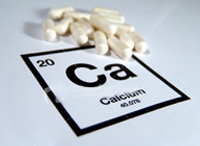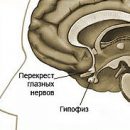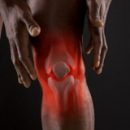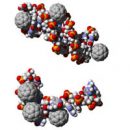Hormones of the parachitoid gland is pararatgommon. The action of the parathricon is aimed at increasing the concentration of calcium and reduce the level of phosphates in the blood due to the effect on bone tissue, kidneys and gastrointestinal tract.
Content
Functions of parachitoid gland
Porish-shaped or parathyroid glands are on the front surface of the neck, behind the thyroid gland and closely adjacent to the rear surface of the thyroid gland, to the lower poles of its both shares. Usually, a person has four parachitoid glands for two on each side, but quite often there are various options for the number of nearby glands. The fabric of the nearby glands consists of two types of cells. Some of them produce parathgorom, the function of others is still unknown.
Hamon of parachitoid glands - paratggump or paratyrin is a complex protein substance. The effects of the parathgamon are directed mainly to an increase in calcium concentration and a decrease in blood phosphate concentration.
The role of calcium in the human body
 Calcium in the human body plays an extremely important role. Calcium ions take part in many metabolic processes inside the cells of all tissues of the human body. Calcium is involved in the transfer of a nervous pulse from the nervous system to the muscles and in the process of cutting muscle tissue. It is one of the necessary components of blood coagulation system. More than 99% of the total calcium stock in the body is in bone tissue. In an adult, the number of calcium is about one kilogram. Thanks to calcium, bone tissue becomes solid and durable.
Calcium in the human body plays an extremely important role. Calcium ions take part in many metabolic processes inside the cells of all tissues of the human body. Calcium is involved in the transfer of a nervous pulse from the nervous system to the muscles and in the process of cutting muscle tissue. It is one of the necessary components of blood coagulation system. More than 99% of the total calcium stock in the body is in bone tissue. In an adult, the number of calcium is about one kilogram. Thanks to calcium, bone tissue becomes solid and durable.
About 99% of the calcium in the bones is in the form of hydroxyapatitis crystals. This is a hard-soluble connection and the base (matrix) of bone tissue consists of. The remaining 1% calcium is in bone tissue in the form of phosphorus salts, which are easily dissolved and serve as a source of calcium flow into the blood with suddenly arising its shortage. In the blood is always a certain amount of calcium. Half it is associated with proteins or forms salts, and the other half is free ionized calcium. These forms can move to each other, but their quantities are maintained between their quantities. In the body there is constantly loss of calcium with nails, hair, blood, exfoliated skin cells, through the gastrointestinal tract and kidneys.
Calcium level adjust:
- Parathyrine (parathgormon or hormone of the parachitoid glands), which increases the level of calcium in the blood, at the same time reducing phosphate levels
- Vitamin D derivatives (cholecalciferol) - lead to an increase in blood calcium level
- Calcitonine, produced by parapollicular cells of the thyroid gland, which reduces the concentration of calcium in the blood plasma
Hamon of parachitoid glands Parastirin or pararathgaron increases the level of calcium in the blood by influencing bone tissue, kidneys and gastrointestinal tract.
In the bone system, paratggumon increases the output from the bone of the easily dissolving part of calcium, but its main effect is to accelerate the synthesis of enzymes that cause the decay of the bone matrix. The bone base under the influence of the paranthormon is exposed to resorption (resorption) and calcium ions are released into blood.
In the kidneys, paratggamon causes an increase in the removal of phosphates with urine, and reinforcing calcium suction, reducing its excretion with urine. In addition, parathgamon enhances the excretion of sodium and potassium from the body and reduces magnesium elimination.
Another effect of the paranthormon in the kidneys is the transformation of vitamin D from an inactive form to active. In the gastrointestinal tract, paratyrin increases the suction of calcium in the small intestine with the same vitamin D.The required link in the regulation of calcium exchange is vitamin D and its derivatives. It is absorbed through the delicate intestine along with other fative substances or produced in the skin under the influence of ultraviolet light.
Next, vitamin D is subjected to chemical transformations in the liver and kidneys and turns into an active metabolite, which is a true hormone. Under the influence of active metabolite of vitamin D, the amount of calcium in bone tissue increases, thereby increasing the bone mass. In the kidneys, Vitamin D causes a decrease in the removal of calcium with urine, and in the gastrointestinal tract stimulates active absorption of calcium and phosphates from received food.
Another component regulating calcium exchange in the body is calcitonin - a hormone produced by parapolycular cells of the thyroid gland. Ultimately, calcitonin causes a decrease in the concentration of calcium in the blood, when it exceeds 2.5 mmol / l. In the bone system of calcitonin prevents the resorption of bone tissue and the elimination of calcium. In kidneys under the influence of calcitonin, the removal of sodium, chlorides, calcium and phosphates increases. In addition, other hormones are involved in the regulation of calcium exchange: hormones of adrenal cortex, sex hormones.









